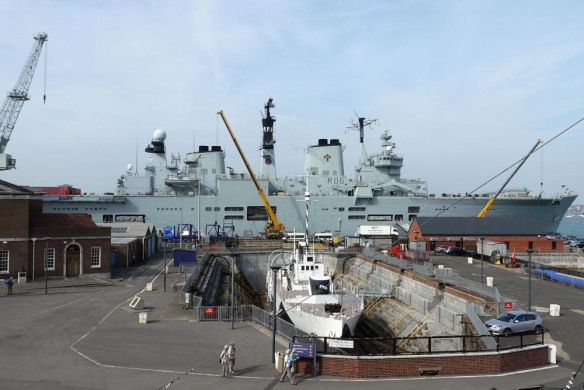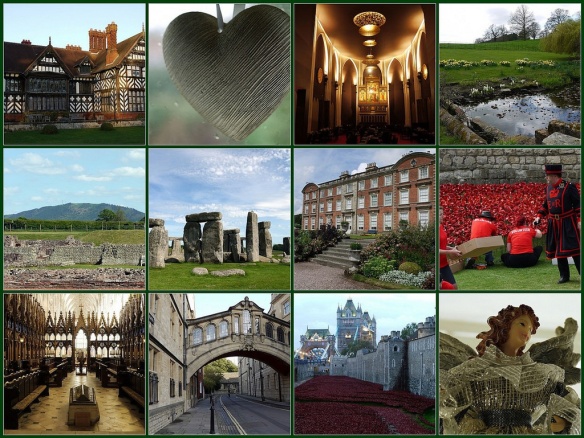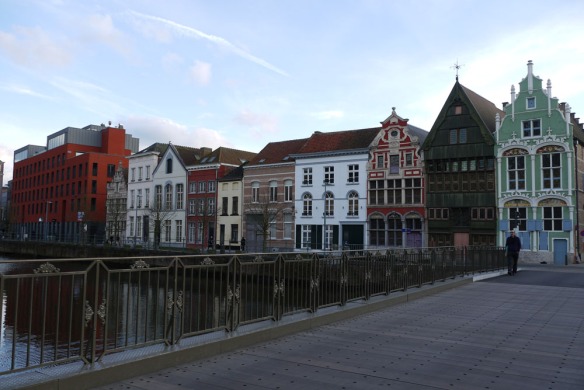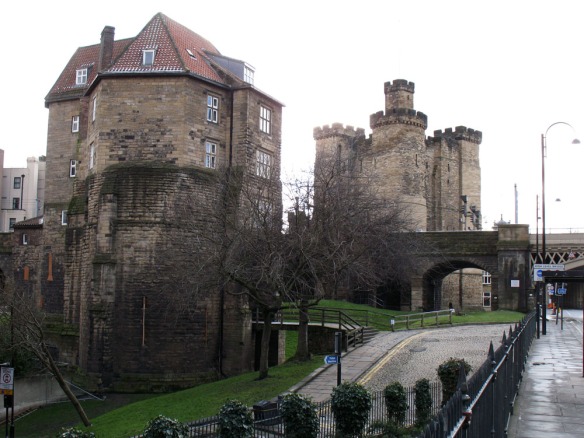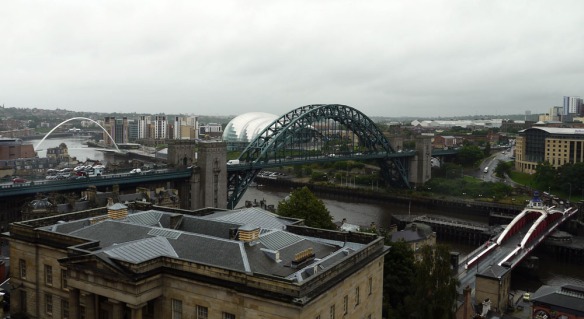Portsmouth dockyard is home to historic warships alongside museums showcasing naval history. The dockyard has many attractions so you need at least two days to get the best out of it. A good place to start is HMS Victory, Lord Nelson’s flagship and the world’s oldest commissioned warship. Victory is in dry dock so unable to sport full mast because the weight would cause her hull to bow. In 1805 she was Lord Nelson’s flagship at the Battle of Trafalgar, the battle in which Nelson died a hero’s death and which also marked the end of Napoleon’s attempt to invade Britain by the seas.
The inside of Victory gives an insight into what life would be like at sea. I found it a lot more compact inside than I imagined; even I had to duck my head at times. I found it strange to think that I was on the vessel where Nelson spent the last moments of his life.
In a dry dock behind HMS Victory is the new Mary Rose museum. The building was purpose built to house the remains the flagship of King Henry VIII which capsized and sank in the Solent in 1545. The museum is very well done; the remains of the Mary Rose are on its starboard side and on the port side the artifacts that were found with the ship were displayed laid out as they would have been on the ship. The starboard side was preserved by silt whilst the portside was exposed and so decayed and was lost. The Mary Rose is currently behind Perspex because she is being dried out as part of the final stages of the work undertaken to preserve her. It was good for me to have seen Victory first because the layout of the two ships is similar which allowed me to interpret clearly what I was seeing of the Mary Rose.
Another historic sailing ship housed at Portsmouth is HMS Warrior. Built in 1860 she was the first armour-plated iron-hulled warship, the most revolutionary warship built. She rendered every other battleship of the time obsolete. Warrior was propelled by steam power as well as being fully rigged for sail.
Historic dockyard No. 1 houses HMS M.33 a Coastal Bombardment vessel built in 1915. M.33 is one of only two British warships to survive from the First World War. The ship fought in the Gallipoli Campaign and went on to play a part in the Russian civil war. She is currently being renovated and it is planned that the work will be completed, allowing full public access, in time for the 100th anniversary of the Gallipoli Campaign later this year.
The dockyard is still a working naval dockyard and current ships of the Royal Navy can be seen in the harbour. They can also be viewed from Victory museum’s viewing platform. During my visit, one of the museum’s curators explained about the decommissioning of HMS Illustrious within Portsmouth Dockyard. She then produced a book on warships and showed some of the ships that were currently in dock. Another prominent ship in the docks at the time was HMS Dragon (Type 45 air defence destroyer) which was being refitted prior to her current deployment in the South Atlantic.
The curator next pointed out a Victorian structure that covered the place where Queen Victoria alighted her train before boarding a ship to Osborne House on the Isle of Wight. I was also pointed in the right direction to find W L Wyllie’s excellent Panorama of Trafalgar which I otherwise would have missed. The painting was displayed as a ’son et lumiere’ which was an excellent way of showing it off but it also meant I couldn’t linger to study it as long as I would have liked.
The best way to see the ships that are docked in the port, along with other more permanent features is to take a boat trip around the harbour. The tour includes a commentary naming the ships in harbour on the day and pointing out other various features of interest.
It is also possible to take a free water bus to Gosport to see HMS Alliance at the Submarine Museum and the Museum of Naval Firepower which is situated nearby. I ran out of time so this is on my list for the next time I visit.
Another attraction included in the entrance ticket is the nearby Museum of the Royal Marines which is housed in the former Royal Marines Officers Mess at Eastney Barracks. The museum provides an in depth history of the Royal Marines and gives insight into what modern Royal Marines basic training involves and what it takes to be a Royal Marine. The videos of recruit’s stories as they undertook their basic training are quite touching and enlightening. I spent the whole morning there and I could have done with a little bit longer.
The dockyards are also home to the National Museum of the Royal Navy which is dedicated to past and present men and women of the Royal Navy. In addition to the fine ships and Naval history that can be seen at the dockyards there are many other historical landmarks that are worthy of notice.
I thoroughly recommend a visit to the Portsmouth Historic Dockyard and its associated attractions, not all of which I have mentioned.



